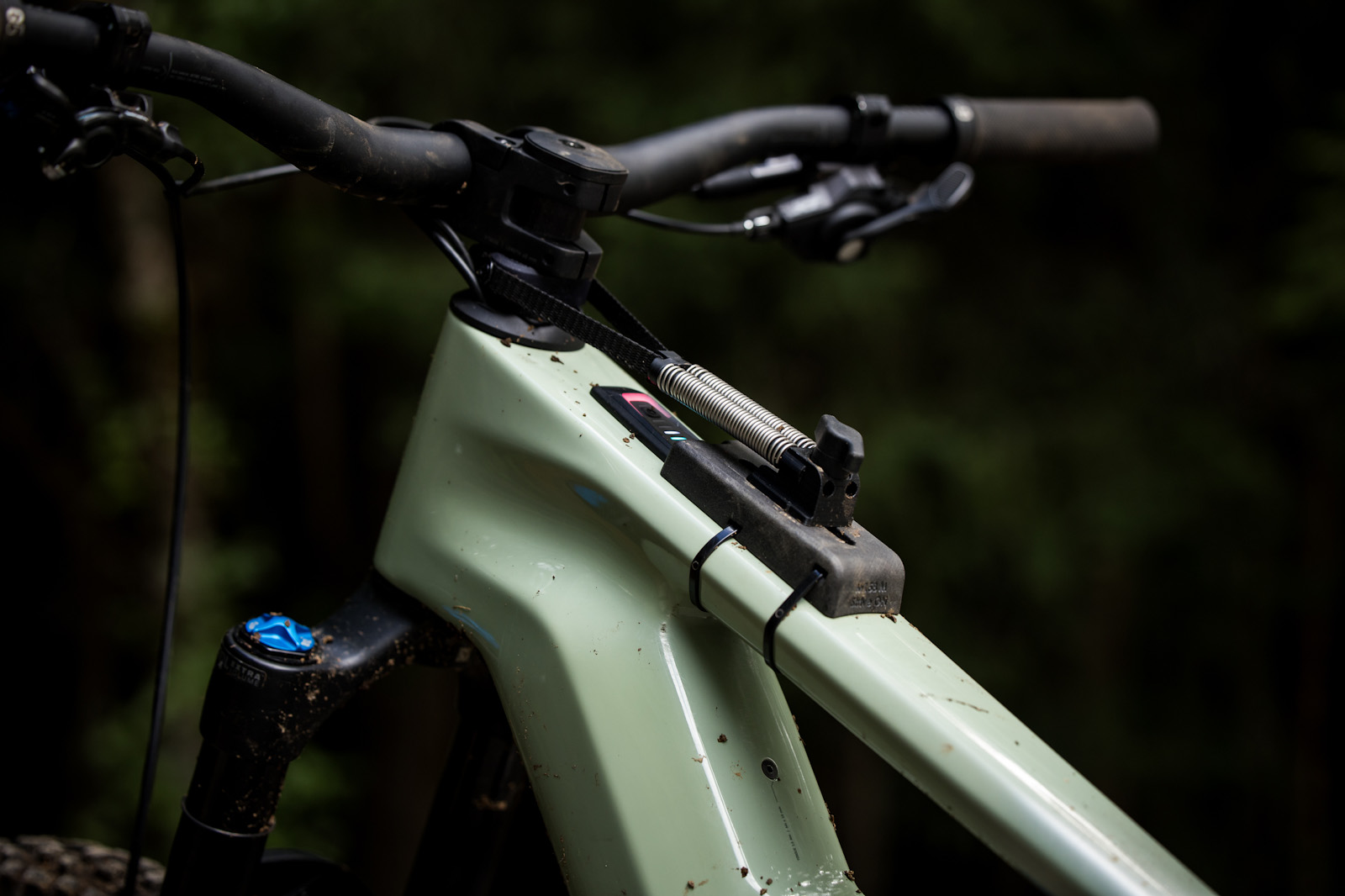When you’re bombing down a rough, technical descent, keeping your handlebars pointed where you want them can wear down your arms quickly. Enter the KIS (Keep It Stable) steering stabilizer.
Created by Jo Klieber, the founder of Syntace and Liteville, the KIS system helps automatically re-center your handlebars as your wheel deflects off rocks and roots, especially when they’re off-camber. Since Canyon helped work on the integration of the KIS system, they’ll be the only brand (aside from Liteville) to offer it on their bikes until next year. Canyon debuted the system on their Spectral all-mountain bike, but they now have it on a demo fleet of Strive:ON eMTBs too.
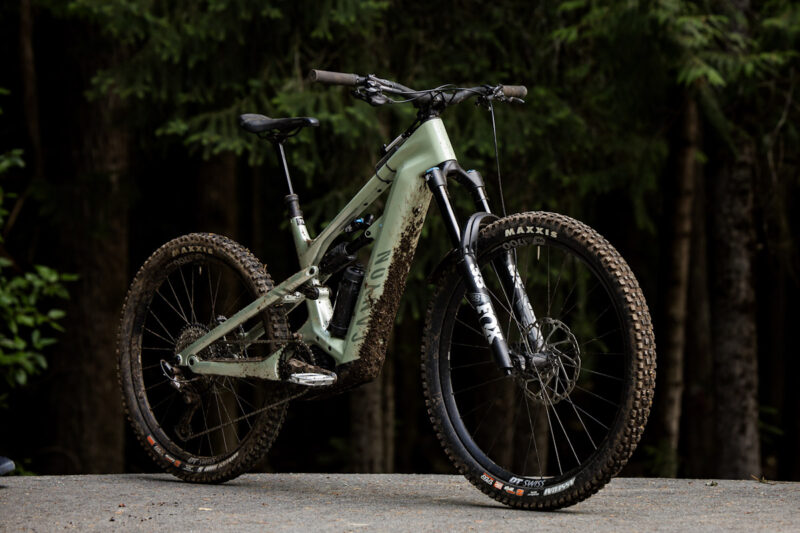
Last fall, our EU Tech Editor Cory Benson got the chance to ride both Canyon’s Spectral MTB and Liteville’s 301CE eMTB with the KIS steering stabilizer, so you can check out his initial impressions of the system. Since Canyon was at Crankworx Whistler, I took the chance to get a feel for the steering stabilizer myself. After one ride my perspective on the idea went from “If no one has done it yet, is it worth doing?” to “This is something that could catch on”.
KIS System – The Basics:
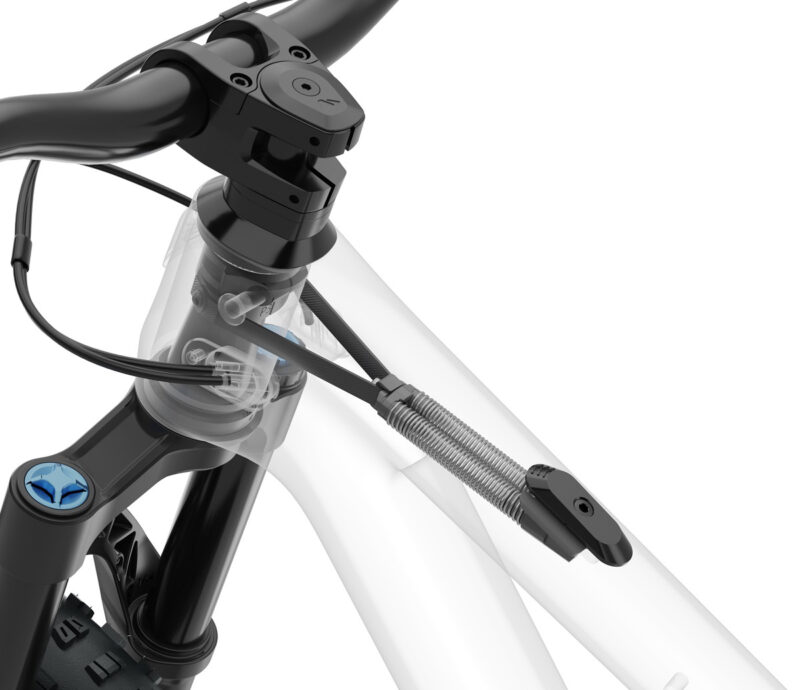
If you’re not familiar with the KIS system, check out Cory’s article covering all the technical details here. To sum it up, it’s basically made of a sliding tension adjuster, two springs, two straps, and a cam that clamps onto the fork’s steerer tube. In finished form, all of this is hidden inside the bike’s top tube except for the small slider that sits on top. The entire system does add weight to a bike, but nothing crazy at about 120g.
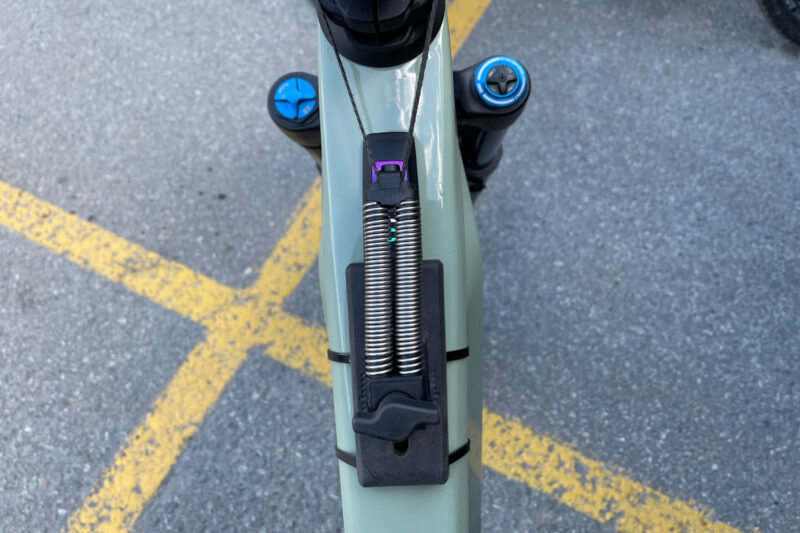
The system shown on the demo bike I rode is not the finished product consumers get: The demo bikes were all set up with an external version of the KIS system that allows test riders to see how it works, and make easy adjustments without the Allen key the integrated version requires. I should also note the external system I rode looked a bit different from the one Cory tried on the Liteville (which uses lighter springs than Canyon’s KIS bikes).
Ride Impressions: Climbing
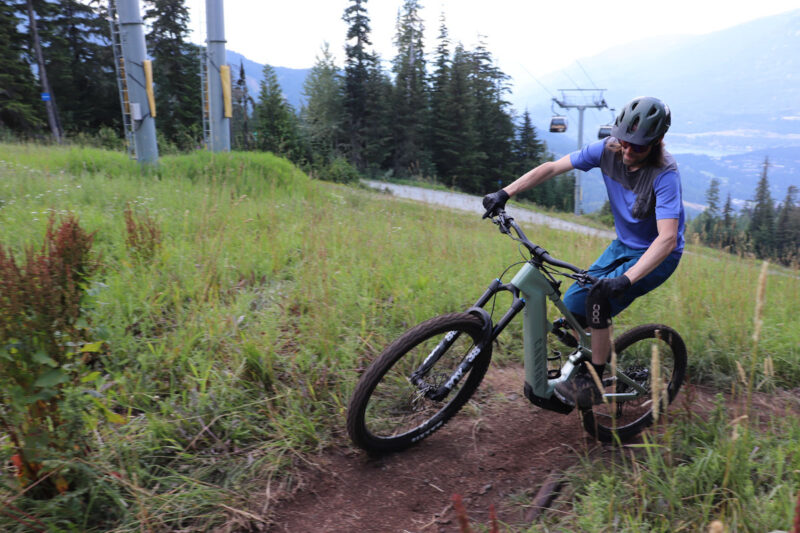
While my intro line suggests the KIS system is mainly beneficial on descents, it does help on climbs too. When I first hopped on the bike, the system’s tension was set in the middle position and I barely noticed any effect from it. I didn’t feel any extra effort while steering the bike, and overall handling seemed pretty normal. Then, at Canyon’s MTB Gravity Brand Manager (and my ride guide) Jack Noy’s suggestion, I completely de-tensioned the steering. Right away I could tell the KIS system was indeed helping me out.
We started our climb on a steep road filled with loose rocks, and when I removed all tension from the KIS system I immediately noticed my front wheel squirming left and right more than it did with the system engaged. Those loose, rolling rocks were pulling my front wheel left and right, and my arms had to work to keep the wheel pointed straight.
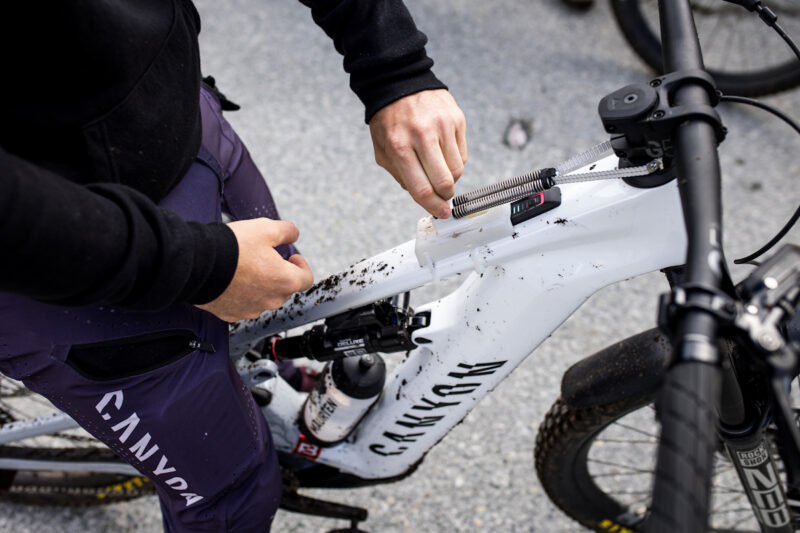
Once I put the tension back to the middle position, it was obvious again that it was helping. The front wheel floated nicely over those loose rocks and clearly wanted to stay straight, even when I purposely kept my hands light on the grips. We only did one shorter ride, but I’m convinced on longer loops this system would reduce arm fatigue. It definitely requires less effort to keep your wheel straight, and with the KIS system, it becomes easier to sit upright and give your arms a break as the bike will resist wheel flop. Overall it takes less energy to keep the bike pointed, yet the system works subtly enough that I didn’t feel like I had to change the way I was riding at all.
Descending:
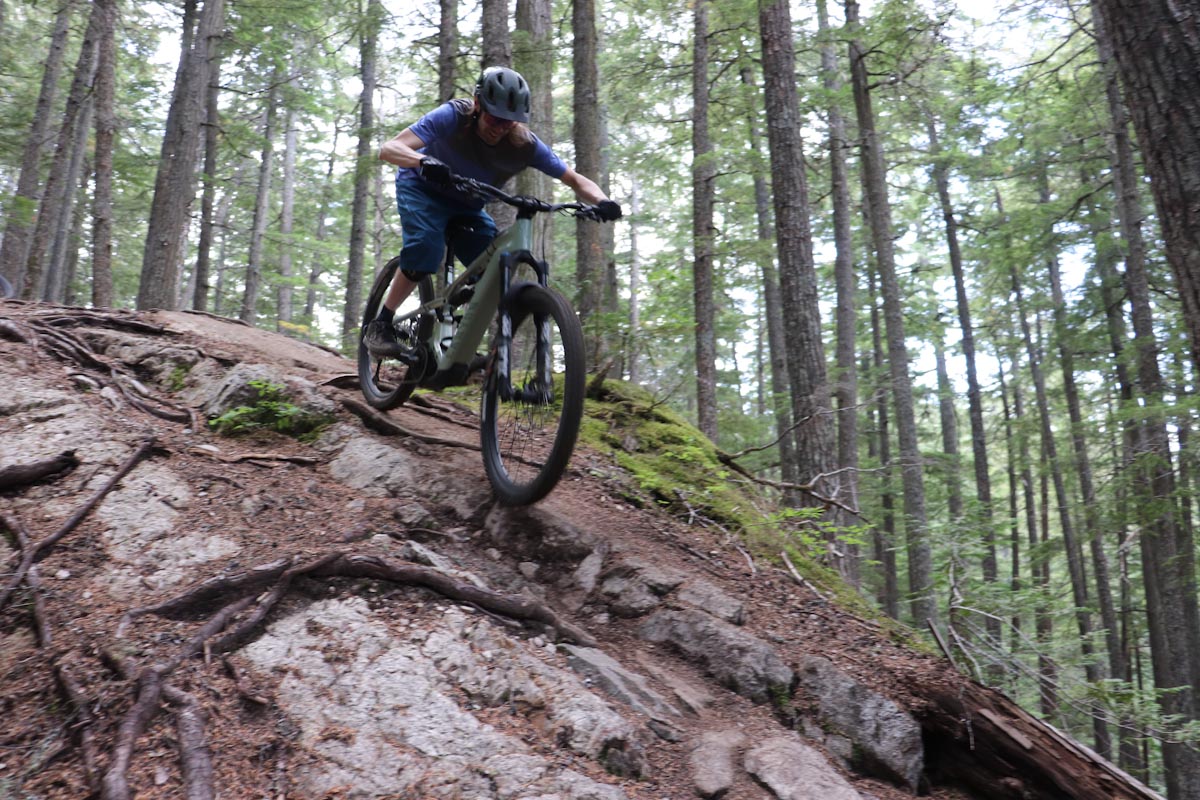
When we pointed the bikes downhill, I kept the KIS system in the middle position to start. The trail we rode was a perfect test for the system, as it is littered with rocks and off-camber roots from start to finish. In the middle tension position, I noticed some very slight resistance in the steering, but not enough to require extra effort. I could feel how my front wheel was lightly resisting deflections, but again the effect was subtle enough that I was handling the bike normally.
In an effort to make the system’s effects obvious, I bumped up the tension by two notches. At this point, I could really feel the difference it was making. This setting produced noticeable steering resistance (although still a long way from making it hard to steer), and I did detect something Jack mentioned about cornering: If the system is set up too tight, it slows down your steering slightly and the bike doesn’t lean in as nicely as a normal bike would. I felt this on one corner, so I dialed the system back one notch.
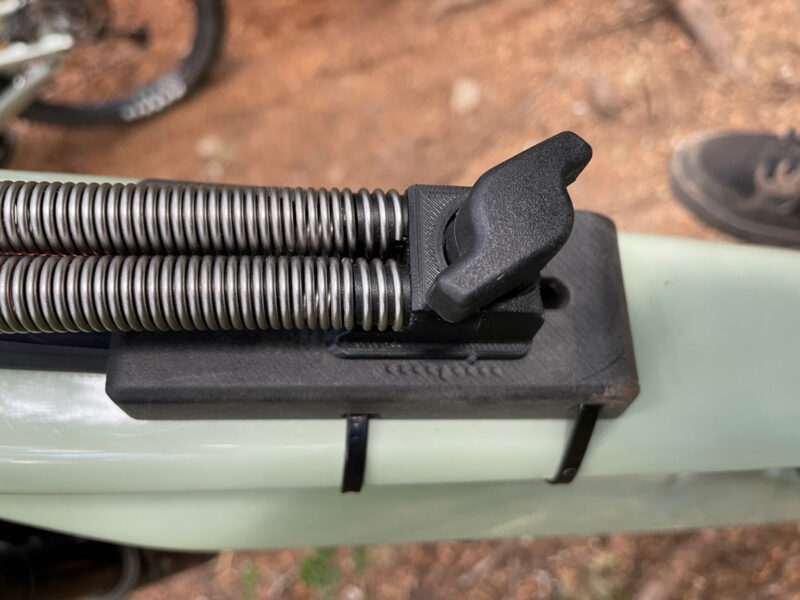
With the KIS system, it is important to find the level of tension that works best for you. I expect most riders should be able to accomplish this, as I (at 150lbs) wasn’t even close to maxing out the tension. I’d expect the range of adjustment would be ample for much larger or stronger riders than me.
The setting I was now in seemed perfect for me – I could feel the wheel fighting to stay straight over rocks and roots, and it was easier than usual to hold a line through the rough. It took no noticeable extra effort to steer, and the cornering felt normal. On the descent, it occurred to me that like the climb, this system makes it a bit easier to take a break when needed. On moderate sections of trail, you could get away with sitting up and lightening your grip more than a normal bike would allow. This could be great for enduro racers tackling several long descents in a row.
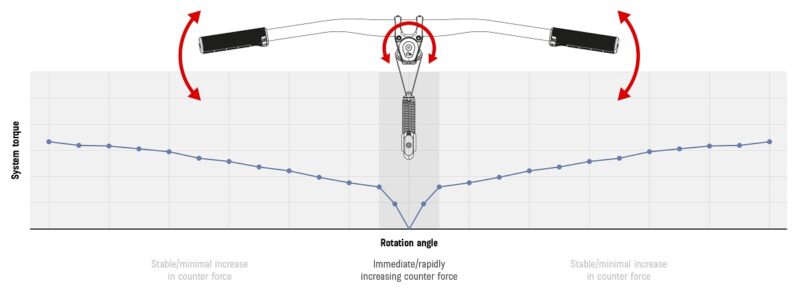
One thing the KIS System was designed not to do is make it feel harder to steer the more you turn the handlebars. I’d say Syntace achieved this, as I didn’t feel a difference between tight corners or wider berms. The KIS system was also designed not to straighten the wheel with any obvious clunk or engagement in the middle, and I would agree I did not notice any such effect.
One thing Cory mentioned is how the auto-centering steering gave the Canyon Spectral an odd tendency when jumping. The trail I rode was a technical descent that didn’t offer much airtime, so I can’t comment on the bike’s handling in the air… give Cory’s article a read for his explanation of how the KIS system attempts to straighten the bike out if you turn your handlebars in mid-air.
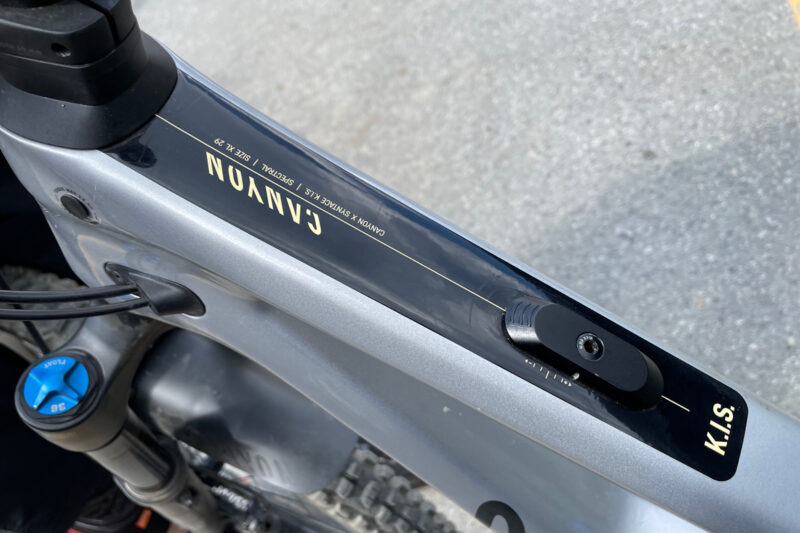
My only final thought is this; I wonder if a two-position KIS system would be beneficial. I was quite happy climbing with the tension set dead in the middle, but when I got to our highly technical descent I preferred a bit more tension to help fight off wheel deflection. I liked how subtle the effects were on the uphill section, but also enjoyed feeling that something was definitely happening on the downhill. The bottom line is I do think Syntace and Canyon are on to something, and wouldn’t be surprised to see the idea gain traction in the MTB world.
